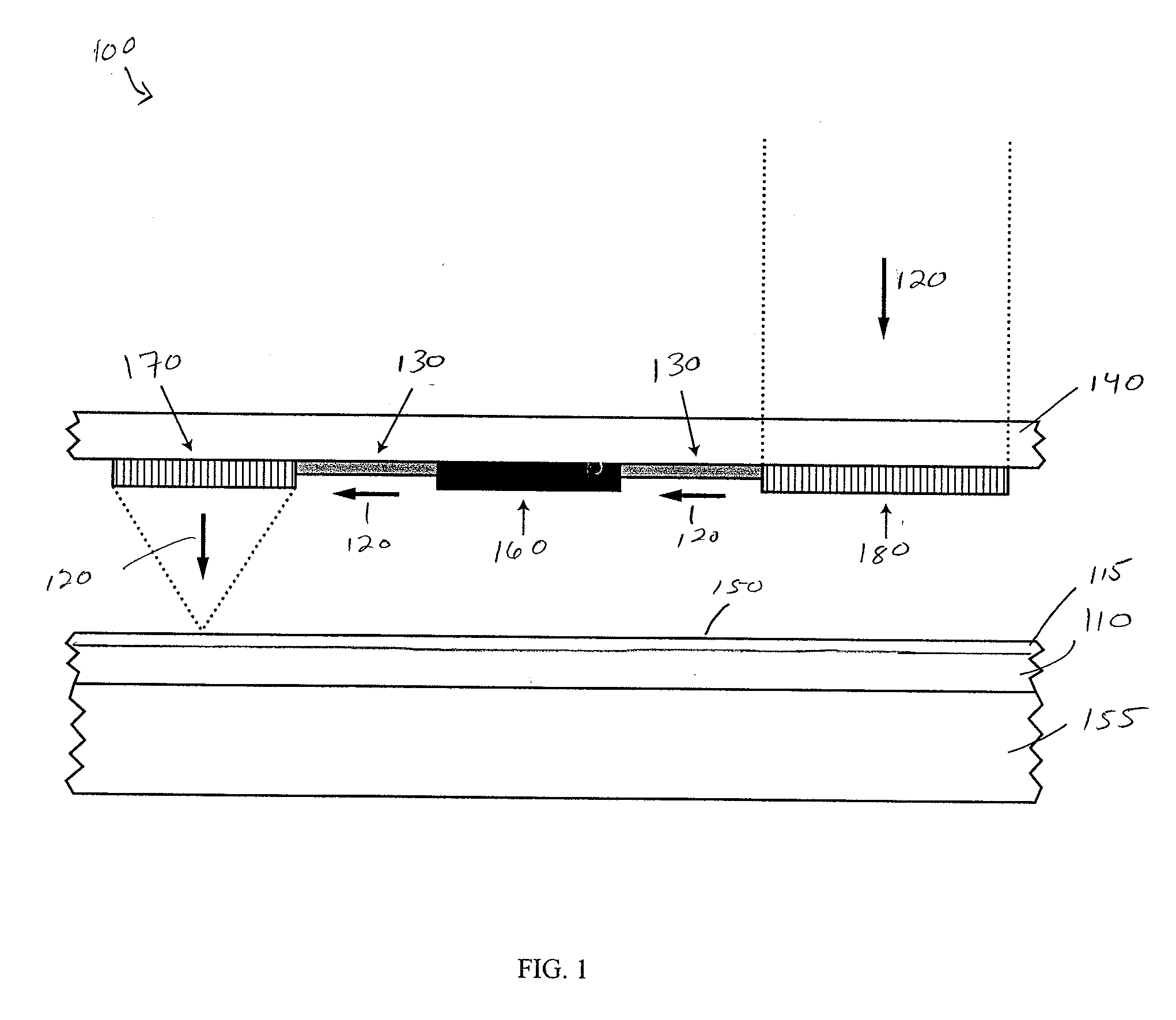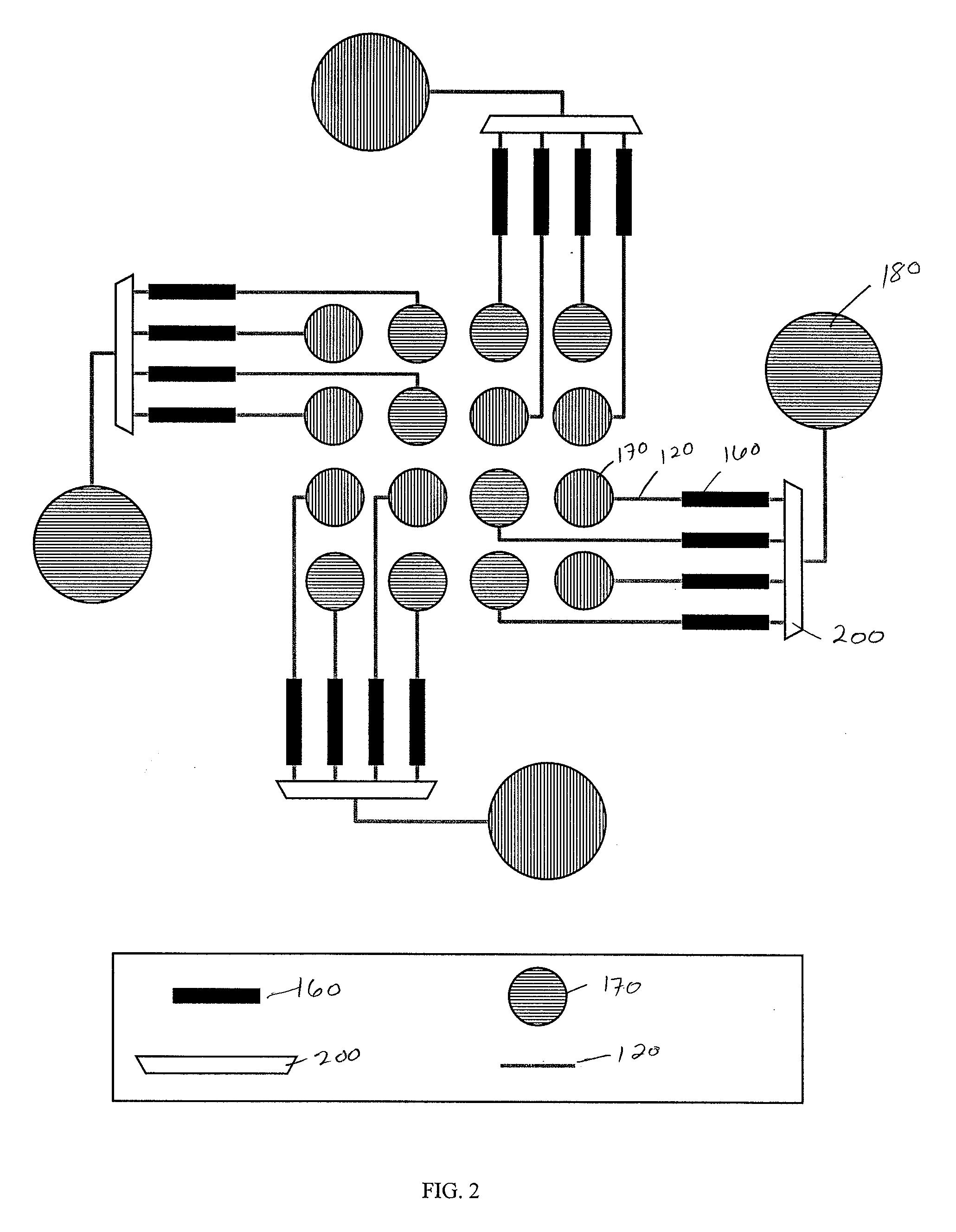Microphotonic maskless lithography
a maskless lithography and microphotonic technology, applied in the field of microfabrication and nanofabrication, can solve the problems of high exposure speed of maskless lithography system, and achieve the effects of high modulation speed, easy scaling, and high number of parallel photon beams
- Summary
- Abstract
- Description
- Claims
- Application Information
AI Technical Summary
Benefits of technology
Problems solved by technology
Method used
Image
Examples
Embodiment Construction
Definitions
[0025] As used herein, the term waveguide means a structure that can guide a photon beam. This includes but is not limited to dielectric waveguides such as rib waveguides, ridge waveguides, strip waveguides, wire waveguides, and rectangular waveguides. Any waveguide design may be employed in embodiments of the present invention.
[0026] As used herein, the term vertical coupler means a structure that can couple a photon beam from free space to a waveguide while changing the direction of the photon beam significantly. Hence, the directions of propagation of the beam in free space and in the waveguide differ by a significant angle. A vertical coupler also works in the reverse direction. It couples a photon beam from a waveguide to free-space while changing the direction of the photon beam significantly. A free-space photon beam emerging from a vertical coupler can be focused or not focused by the vertical coupler, depending on the design of the vertical coupler. Vertical co...
PUM
| Property | Measurement | Unit |
|---|---|---|
| wavelength | aaaaa | aaaaa |
| wavelength | aaaaa | aaaaa |
| distance | aaaaa | aaaaa |
Abstract
Description
Claims
Application Information
 Login to View More
Login to View More - R&D
- Intellectual Property
- Life Sciences
- Materials
- Tech Scout
- Unparalleled Data Quality
- Higher Quality Content
- 60% Fewer Hallucinations
Browse by: Latest US Patents, China's latest patents, Technical Efficacy Thesaurus, Application Domain, Technology Topic, Popular Technical Reports.
© 2025 PatSnap. All rights reserved.Legal|Privacy policy|Modern Slavery Act Transparency Statement|Sitemap|About US| Contact US: help@patsnap.com



